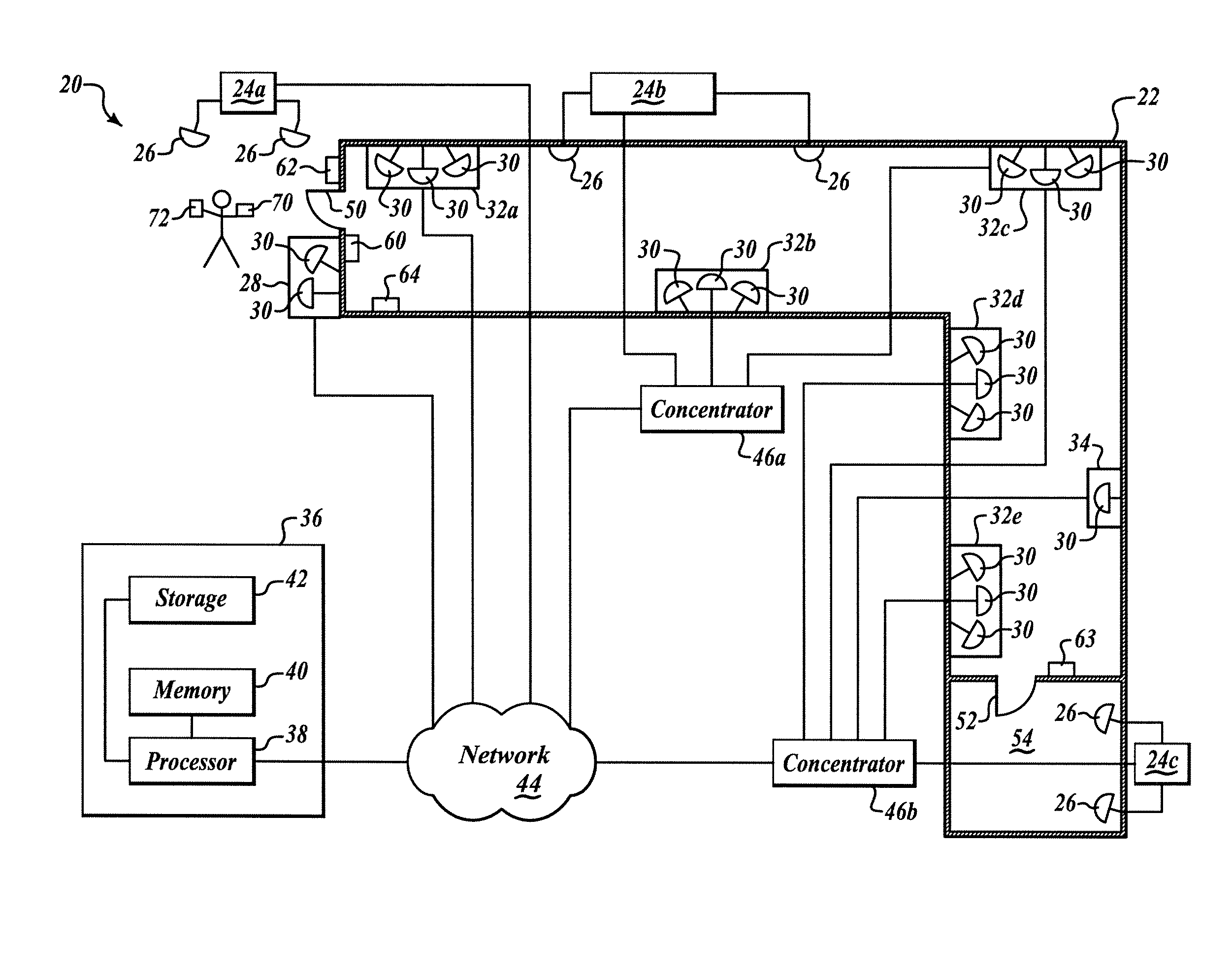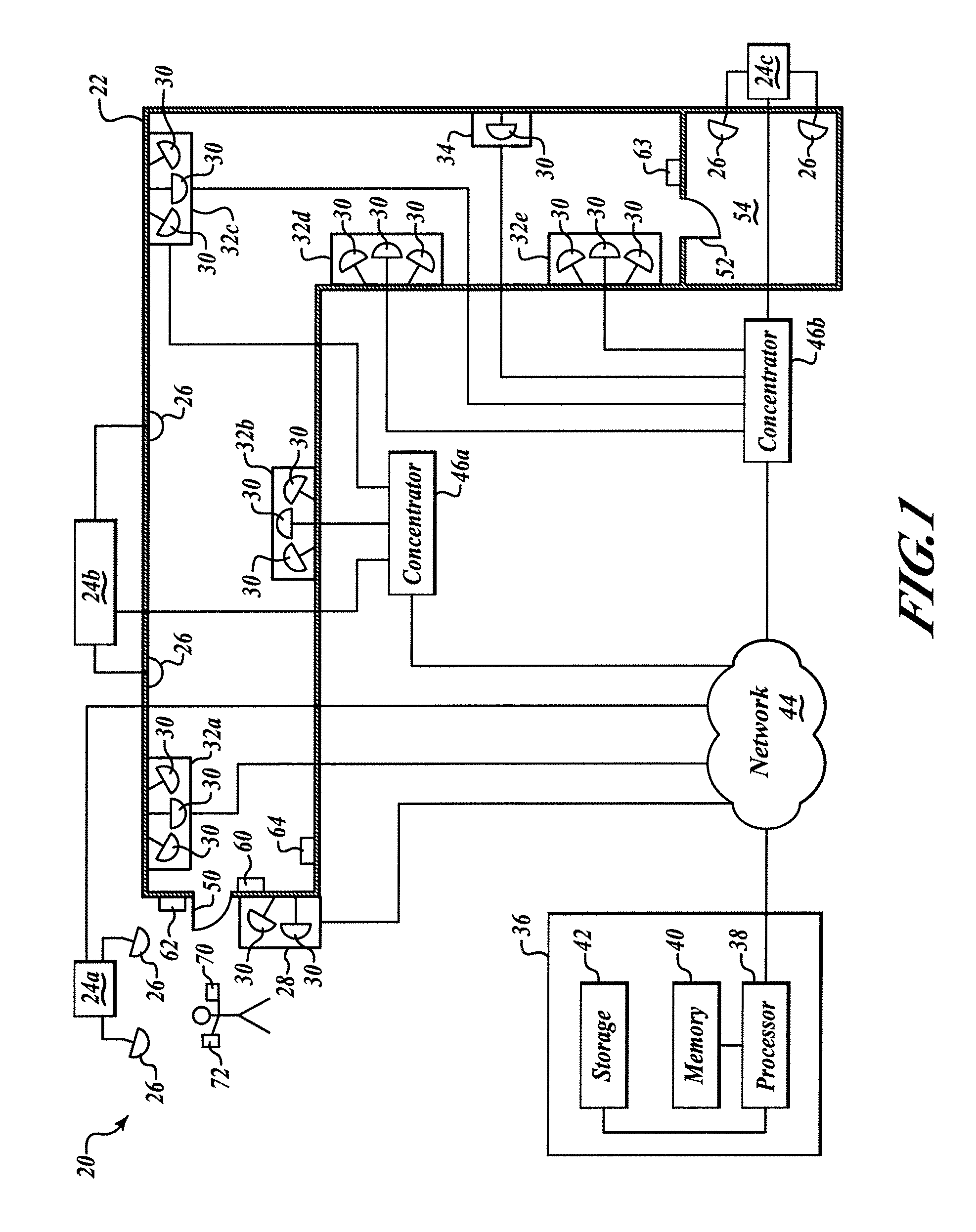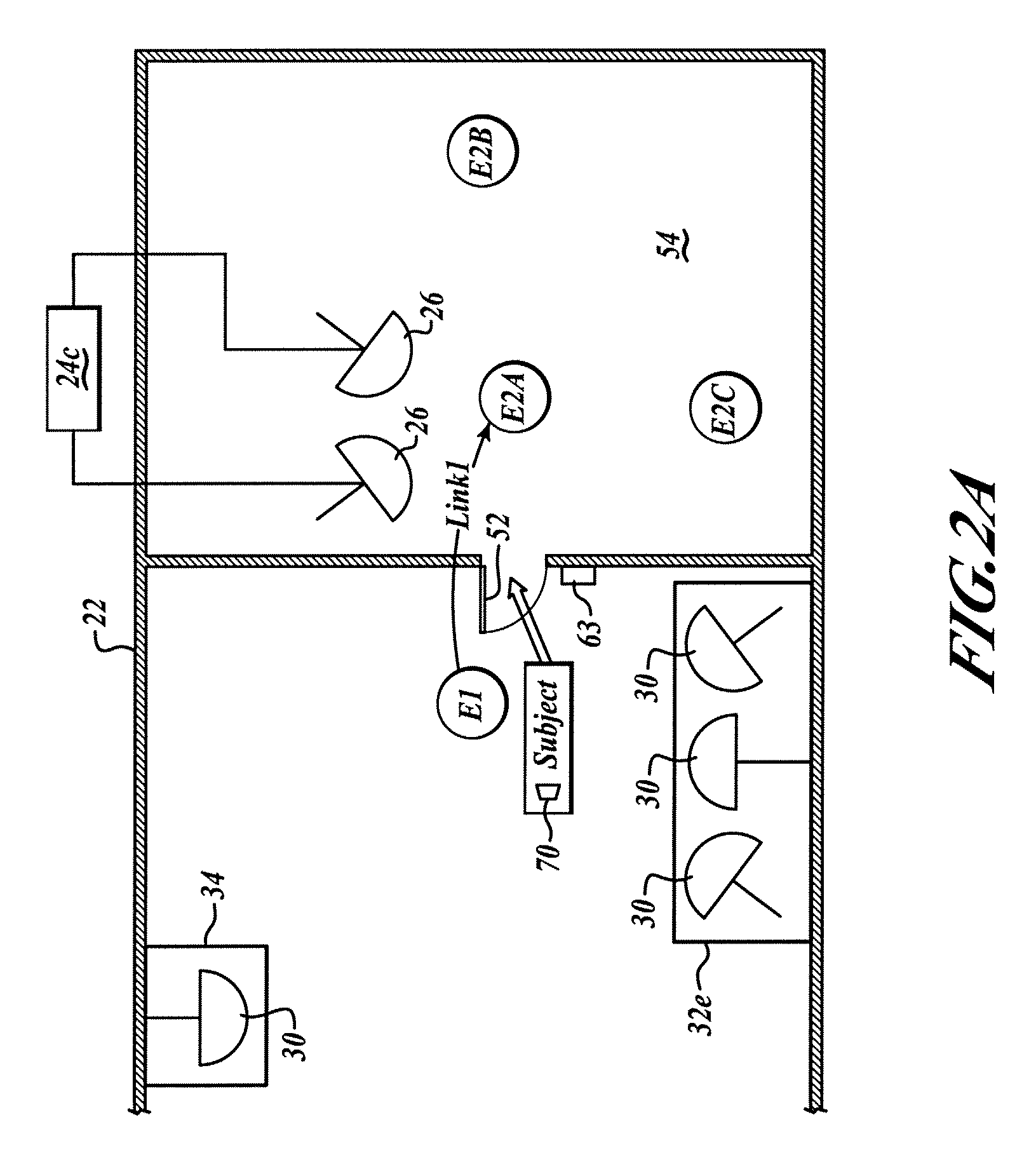Systems and methods for object localization and path identification based on RFID sensing
a technology applied in the field of object localization and path identification, can solve the problems of limited system and method for localizing objects using rfid sensing, and typically do not allow for dynamic sensing reconfiguration
- Summary
- Abstract
- Description
- Claims
- Application Information
AI Technical Summary
Benefits of technology
Problems solved by technology
Method used
Image
Examples
Embodiment Construction
[0019]FIG. 1 is a block diagram showing an environmental view of a system 20 formed in accordance with an embodiment of the invention that is installed in a structure 22. Although a transceiver is preferred, a separate transmitter and receiver may alternatively serve as a transceiver within the scope of this invention.
[0020]The system 20 includes a plurality of radio frequency (RF) readers, each of which is associated with at least one interrogator. Each interrogator includes a transceiver and an antenna. Each interrogator (including transceiver and antenna) or only the interrogator's antenna may be external to the associated RF reader or embedded within the RF reader. The system 20 as shown includes three RF readers 24a, 24b, and 24c, each of which include two interrogators 26 that have antennas external to the RF readers 24a, 24b, and 24c. Transceiver components (not shown) of the interrogators 26 are embedded within the RF readers 24a, 24b, and 24c and are in signal communication...
PUM
 Login to View More
Login to View More Abstract
Description
Claims
Application Information
 Login to View More
Login to View More - R&D
- Intellectual Property
- Life Sciences
- Materials
- Tech Scout
- Unparalleled Data Quality
- Higher Quality Content
- 60% Fewer Hallucinations
Browse by: Latest US Patents, China's latest patents, Technical Efficacy Thesaurus, Application Domain, Technology Topic, Popular Technical Reports.
© 2025 PatSnap. All rights reserved.Legal|Privacy policy|Modern Slavery Act Transparency Statement|Sitemap|About US| Contact US: help@patsnap.com



